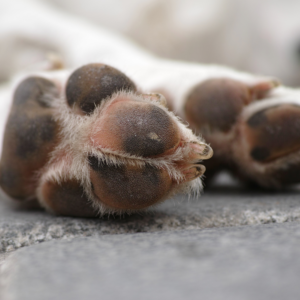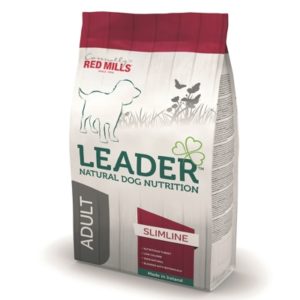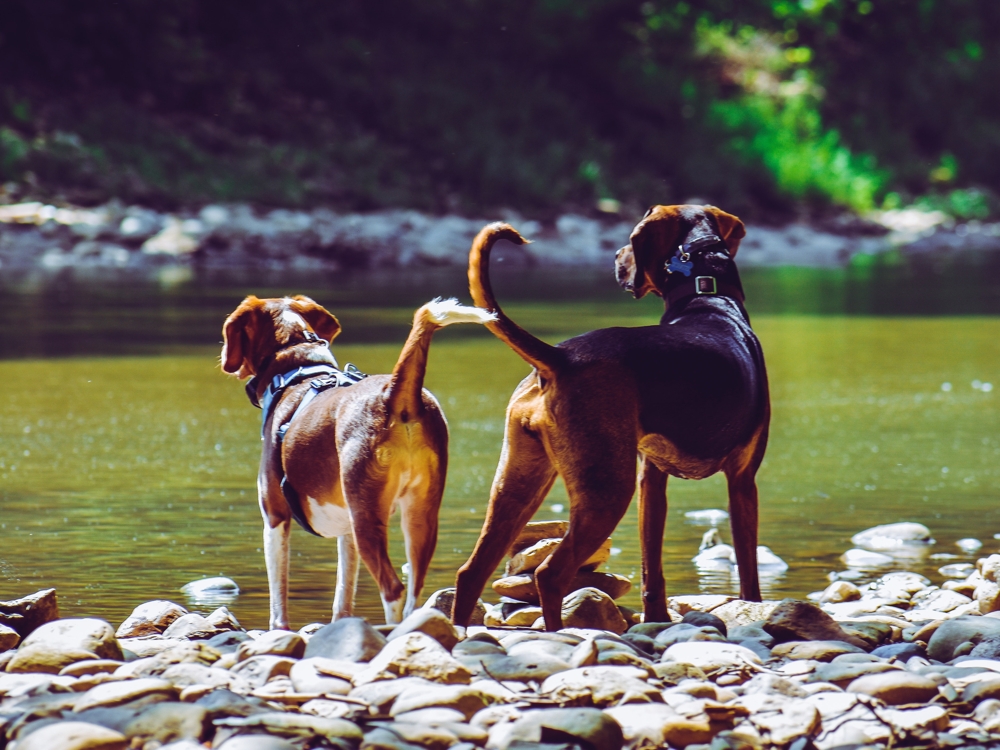How Can I Tell if My Dog Is Overweight?
Share
[Sassy_Social_Share]While we humans can be extremely harsh in judging our own weight, we generally tend to do into denial about our dogs being overweight. We love a roly-poly pup. And we are suckers for those big pleading eyes begging for our food. It is important for dogs to maintain a healthy weight, and that means we owners need to know what that weight is for our dogs. It isn’t always obvious. Instead of just wondering ‘is my dog overweight?’, learn how to assess your dog’s weight based on his breed or type.

Some dogs are naturally lean, with a bone structure that can’t tolerate much excess weight. Greyhounds and other sighthounds such as Whippets and Salukis are examples of this. People not familiar with them are often worried they are underweight. Other breeds, such as Rottweilers and St. Bernards are naturally stocky dogs with a bit of bulk to them. So when you are trying to determine ‘is my dog overweight’, what type of dog you have is a vital part of the answer.
Breed Standards and Weight
If your dog is a purebred (whether or not the dog is registered and documented), you can check the breed standard with the kennel club. The Irish Kennel Club’s website list of breed standards includes the weight range for each breed. While the British Kennel Club’s website includes much useful information including height range, it does not give a weight range in the online breed standards. The American Kennel Club has an extensive list of breed standards on their website that includes weight ranges. Remember, your dog can be within the weight range and still be over (or under) weight. If, for example, your dog is at the lower end of the height range and the higher end of the weight range, it is time to cut back on the treats.
If you have a purebred dog, you can also look for a breed club that will have more information about the breed standards and other health issues specific to the breed. Kennel clubs and breed clubs are fantastic resources to help learn more about your dog’s health and temperament, as well as their history.
Is My Dog Overweight?
Breed standards are not the only way to asses a dog’s weight. Many dogs are mixed breeds, and while of them have a close but not perfect resemblance to a specific breed, others are more of a mystery. We have many other ways to gauge if a dog needs to shed some weight to be their healthiest.
- A good rule of thumb for all dogs is that you should be able to feel their ribs if you press your hand to their side, but not to see them.
- If you look at your dog from above, you should be able to see their waist. If they look more round or oval, with no defined waist, they could lose some weight.
- If your dog huffs and puffs and stops frequently to rest on a walk, he is out of shape. Even an older dog should be able to walk at a relaxed pace for a short distance without getting winded.
Of course, your vet is a great judge of your pet’s weight. Next time you visit, have your dog weighed and ask the vet about it. Your vet can give you the best advice about your dog’s weight, diet and exercise. Vets will often recommend a light dog food such as Leader Slimline to help your dog lose excess weight.
Why Your Dog’s Weight Matters
Your dog’s weight is not a matter of vanity. It is a matter of health. You might be asking ‘is my dog overweight’ because of his appearance, but the problems obesity causes in dogs are medical. An overweight dog is prone to joint pains and cardiovascular problems. Walking, sniffing around the neighbourhood, chasing balls and playing are your dog’s chief joys in life. Of course he likes to curl up near you too, and that is grand. It’s one of the nicest parts of having a dog. But if your dog can’t run around and play because he is too obese, his joints ache and he gets short of breath, he is losing out. His mental and physical wellness, indeed his longevity, depends on staying reasonably fit.
Not every dog is going to be an athlete. This is not about your dog competing in agility trials. It is simply about him enjoying ordinary, everyday canine pleasures. You want your dog to live his best life, and it is an active life.
How to Help Your Dog Lose Weight
It’s hard for any of us – human or canine – to shift excess weight, but it is not complicated. More exercise and fewer calories is the key. Our dogs do have one advantage – they can’t head to shops and buy unhealthy treats themselves. They aren’t depending on their own willpower, but on ours.
It is never a good idea to make dramatic changes to diet or exercise routines, especially if your dog is older. Start by talking to your vet to get an idea of your dog’s overall health and fitness level. If you aren’t walking daily, it is time to start. Gradually increase the amount of time you spend walking every day. Dogs make excellent fitness buddies. They are motivated, rain or shine, and once you establish a routine, they will expect to go walking at the same time and won’t let you forget. Better still, they don’t brag about their speed or weight loss.
What your dog eats is vital to maintaining a healthy weight. You can help your dog shed those extra kilos by switching to a healthy, lower calorie food such as Leader Slimline. Available in special formulations for small, medium and large dogs, Leader Slimline uses high quality ingredients to make sure that your dog has optimum nutrition so he feels great on his daily walks. And you don’t have to completely harden your heart to those pleading eyes. Leader Train Me treats are also low calorie, so your dog won’t feel he is being deprived. It is critical that the light food and treats you choose provide your dog with all the nutrients he needs to be active and healthy.






